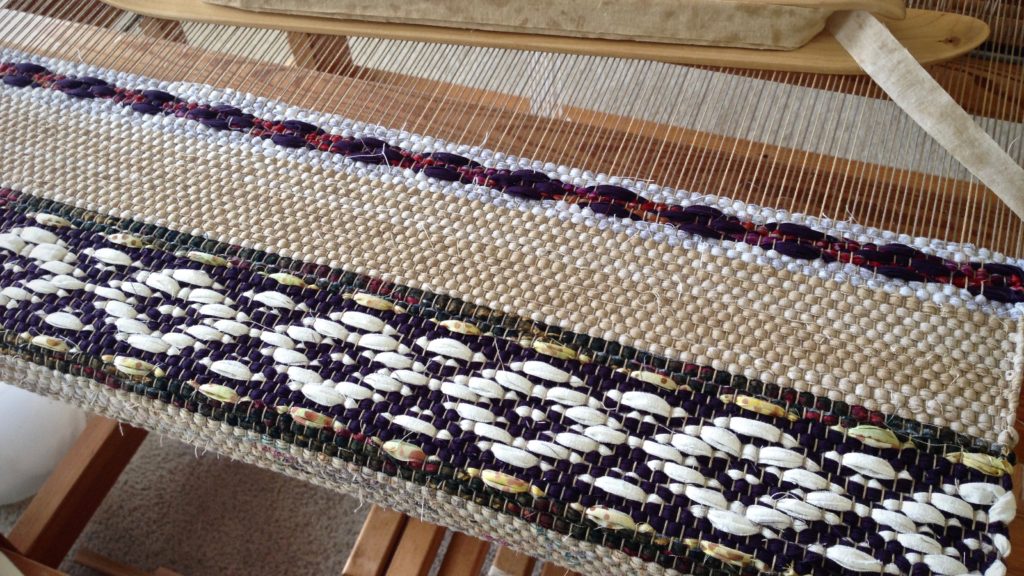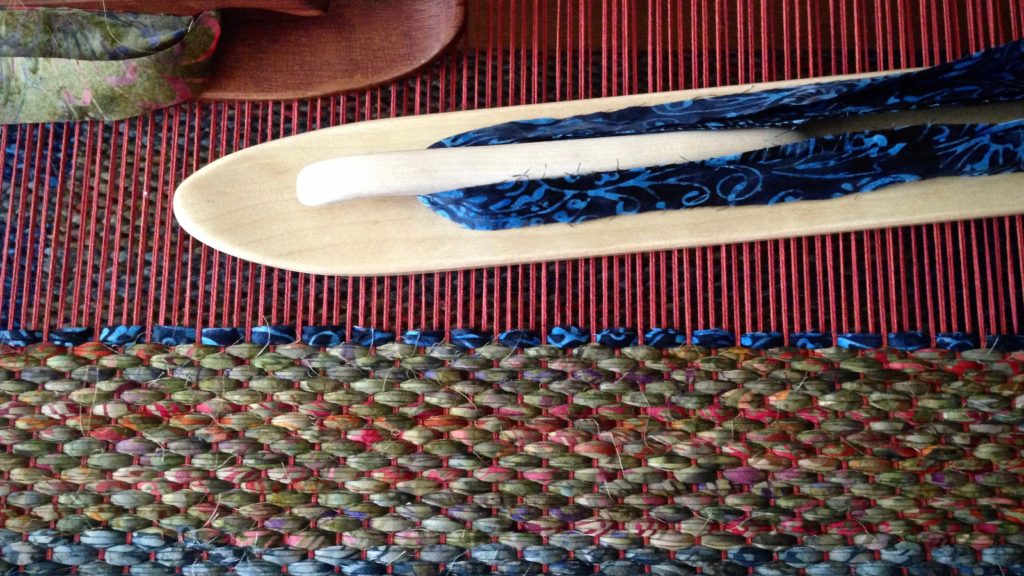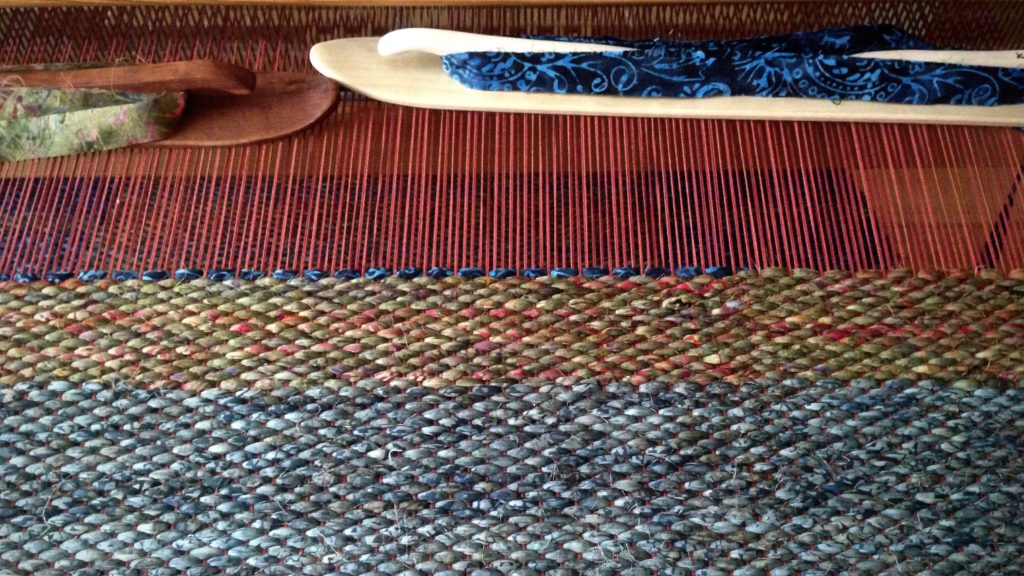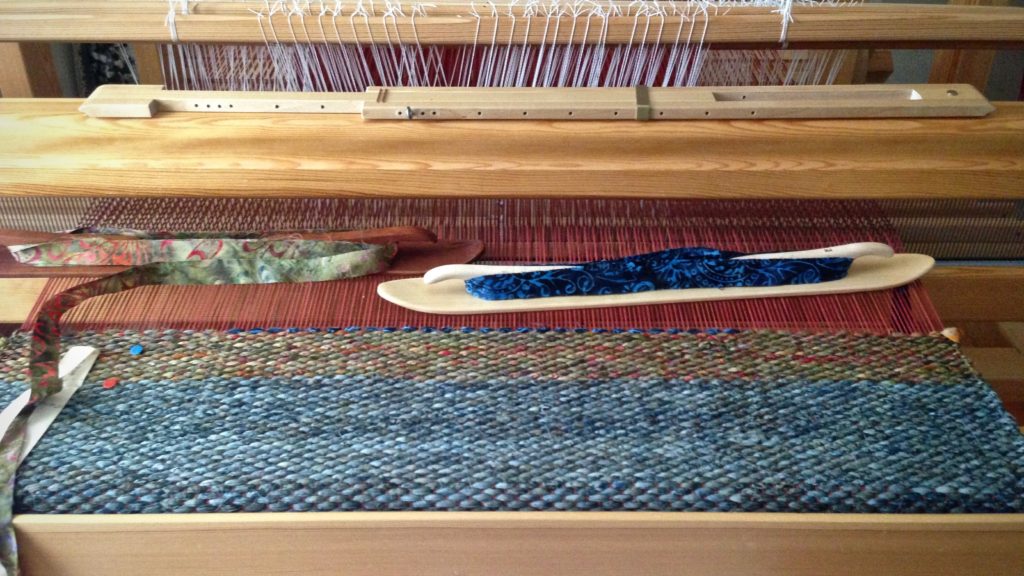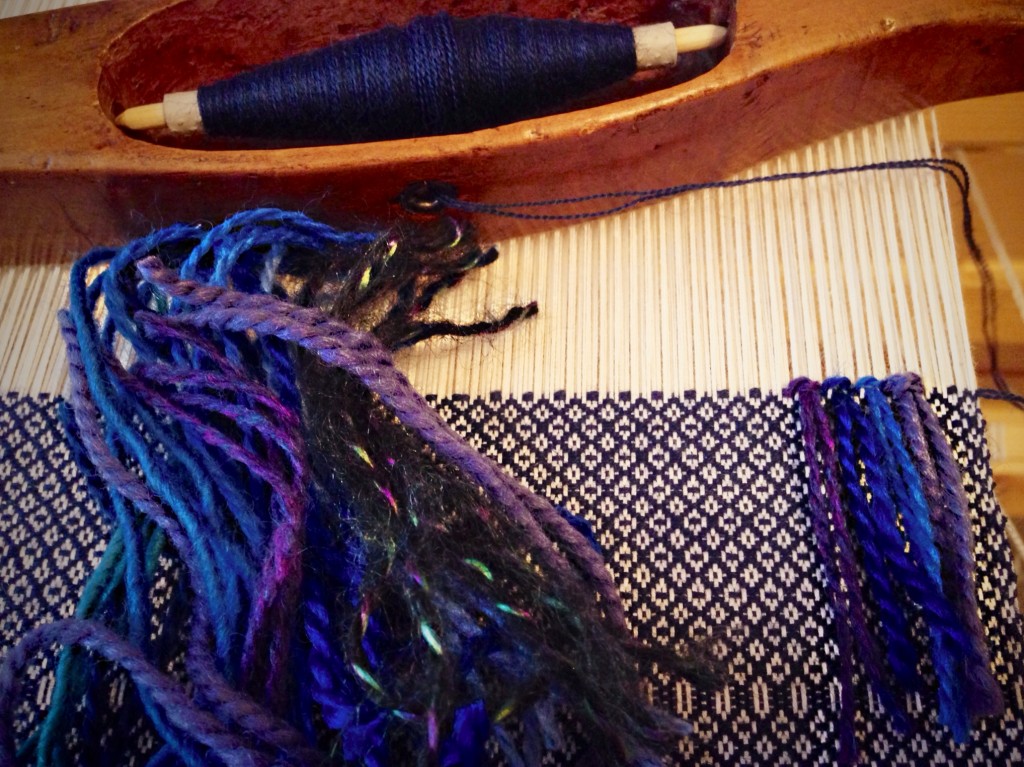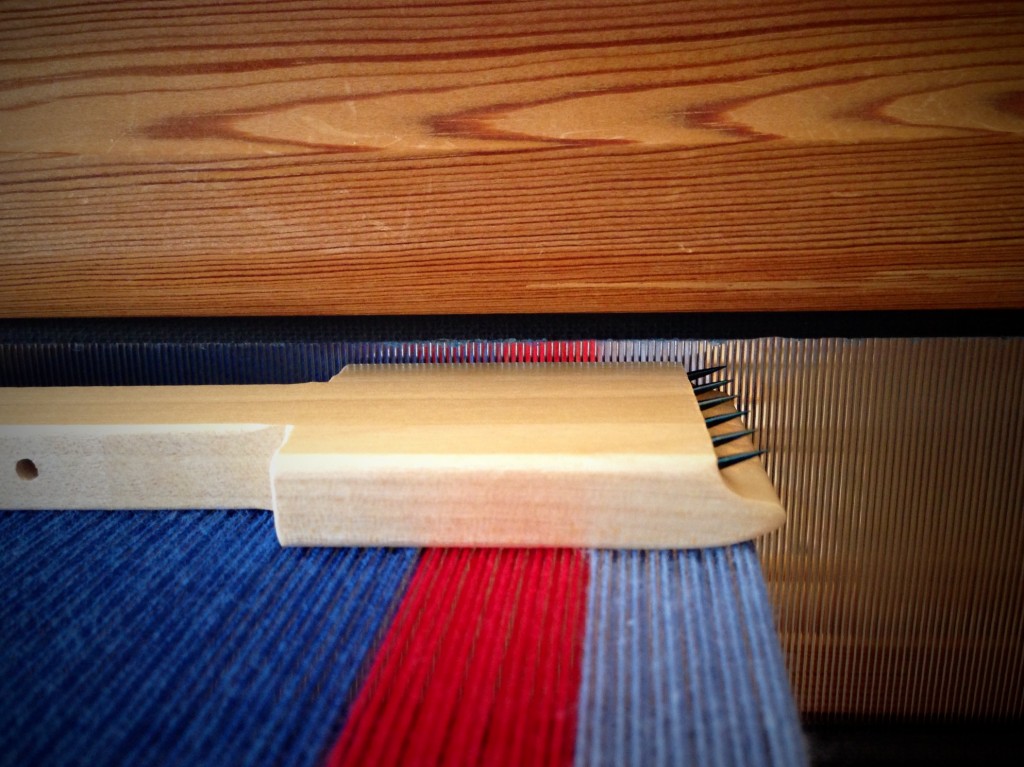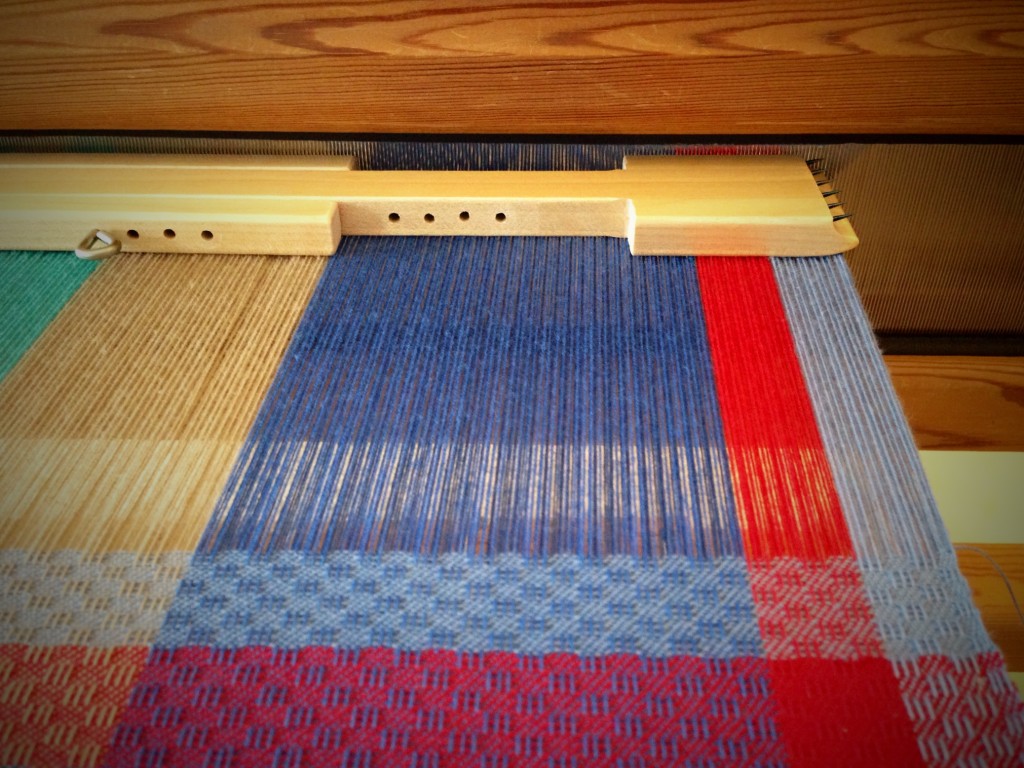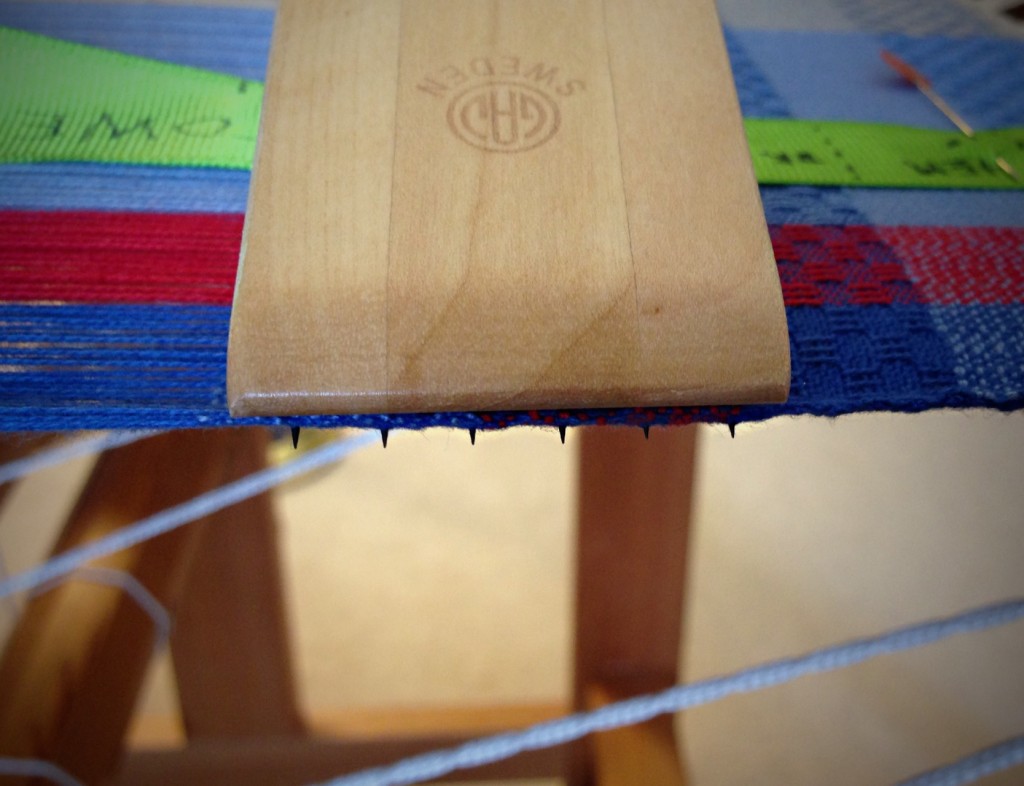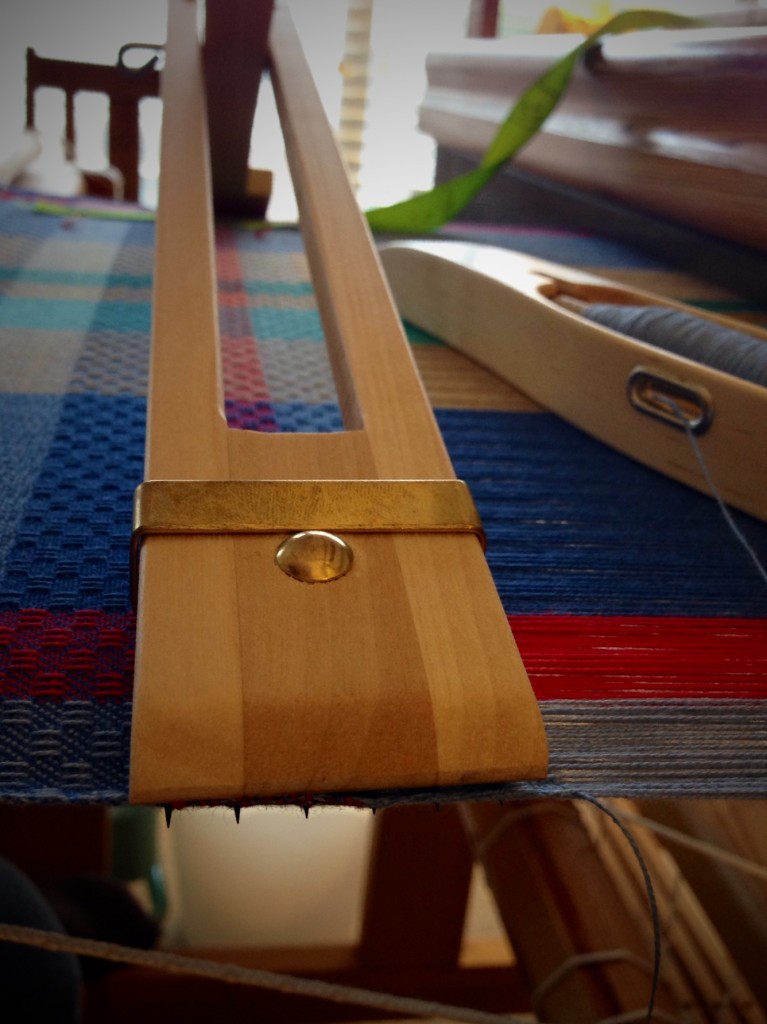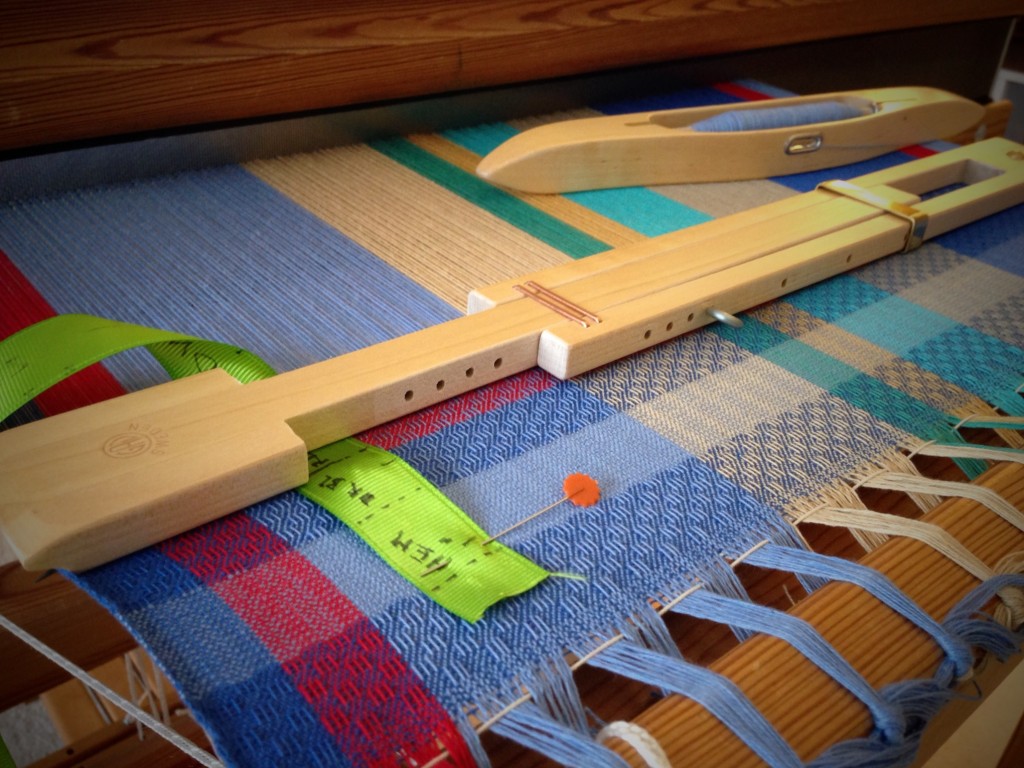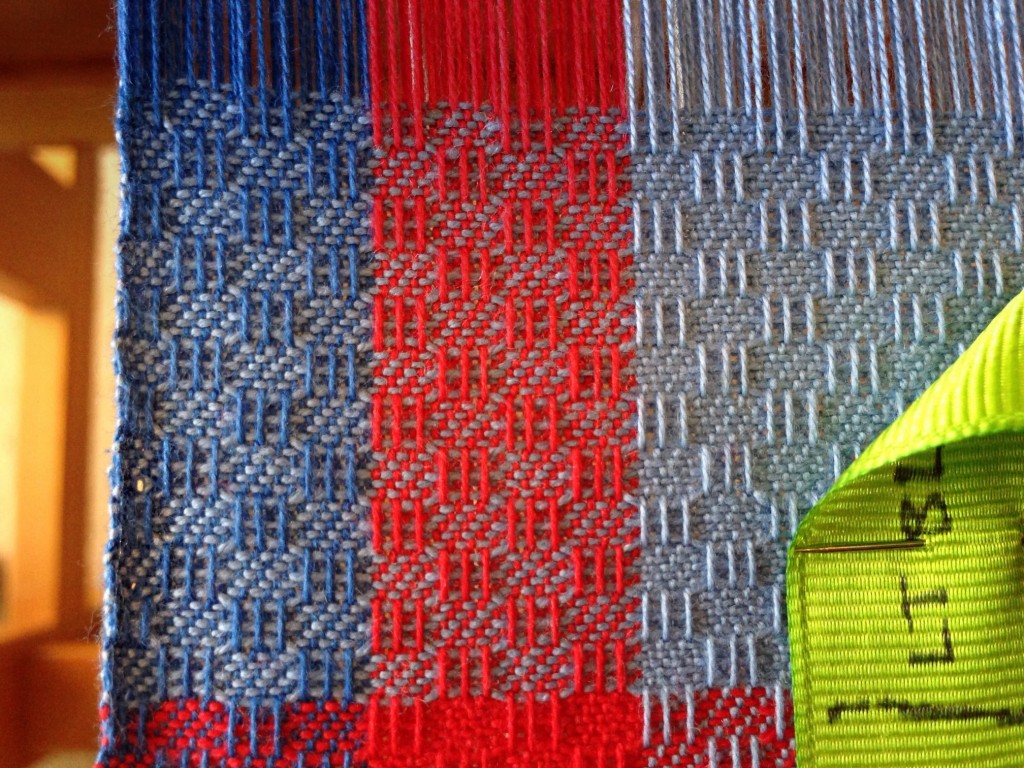After a few weeks of having to refrain from weaving, I am thankful that there was warp to weave one more rug. The quality of warp thread matters because it is the core of the rug. Never underestimate the value of good, strong warp thread for weaving rag rugs.
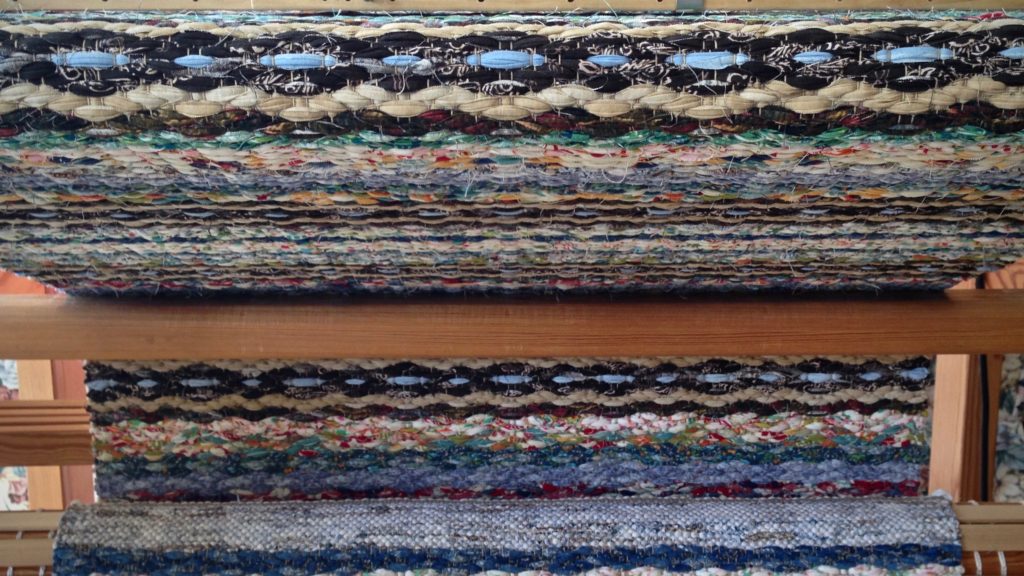
I like to use 12/6 cotton from Bockens. This rug warp is a six-strand thread with high twist. The smooth, nearly-unbreakable thread enables me to ratchet up the tension on the warp. That high tension helps produce sturdy, tightly packed rugs with tidy selvedges. Knowing you are making a rug that will last is a very satisfying and enjoyable weaving experience.
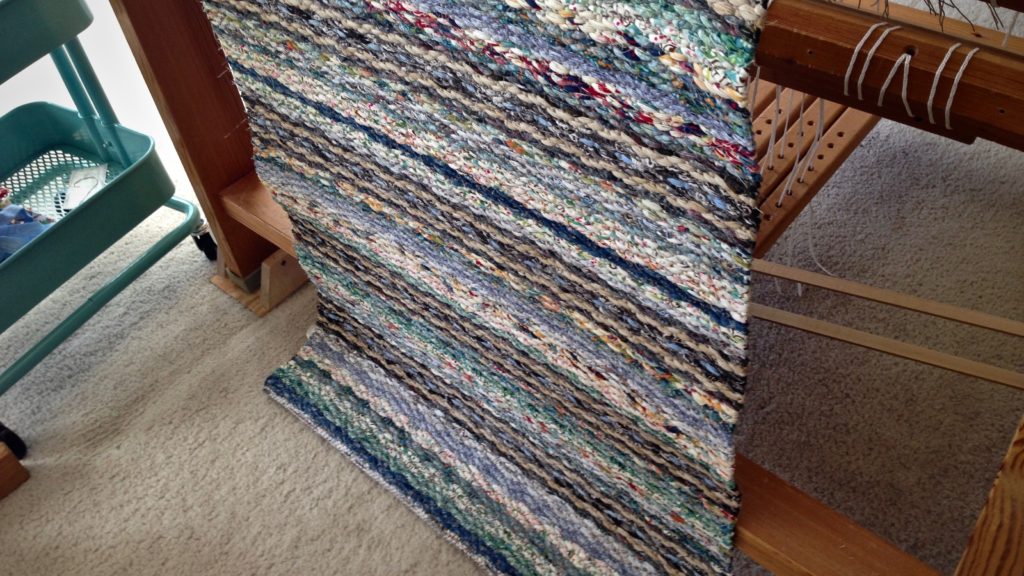
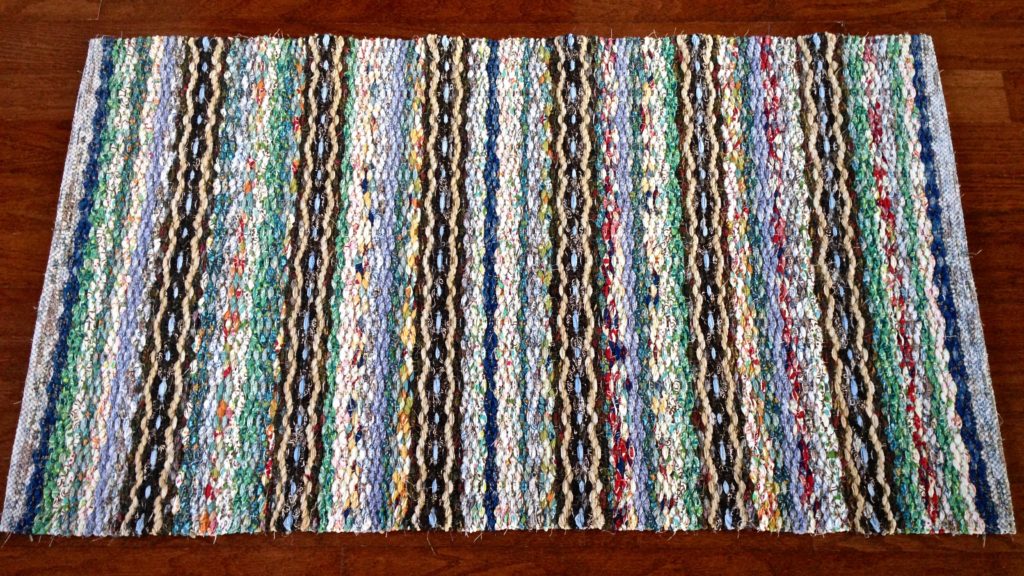
With finishing nearly complete, this rag rug will be enjoyed on the floor of someone’s home. Most people aren’t aware of the structural elements of a rag rug, but they do notice quality in the finished work. People, too, have an inner core–the heart. The heart matters. The strength of our inward framework determines our outward attitudes and actions. Since true quality is found in a life that serves others, most everything comes down to a matter of the heart.
May your quality of life be noticeable.
Happy weaving,
Karen



